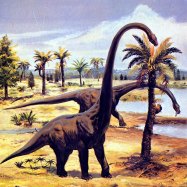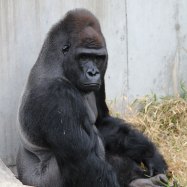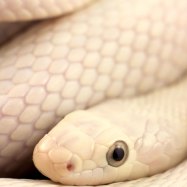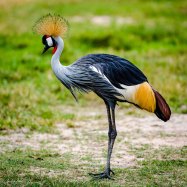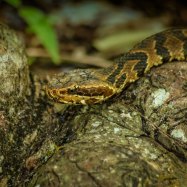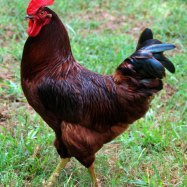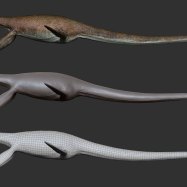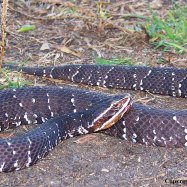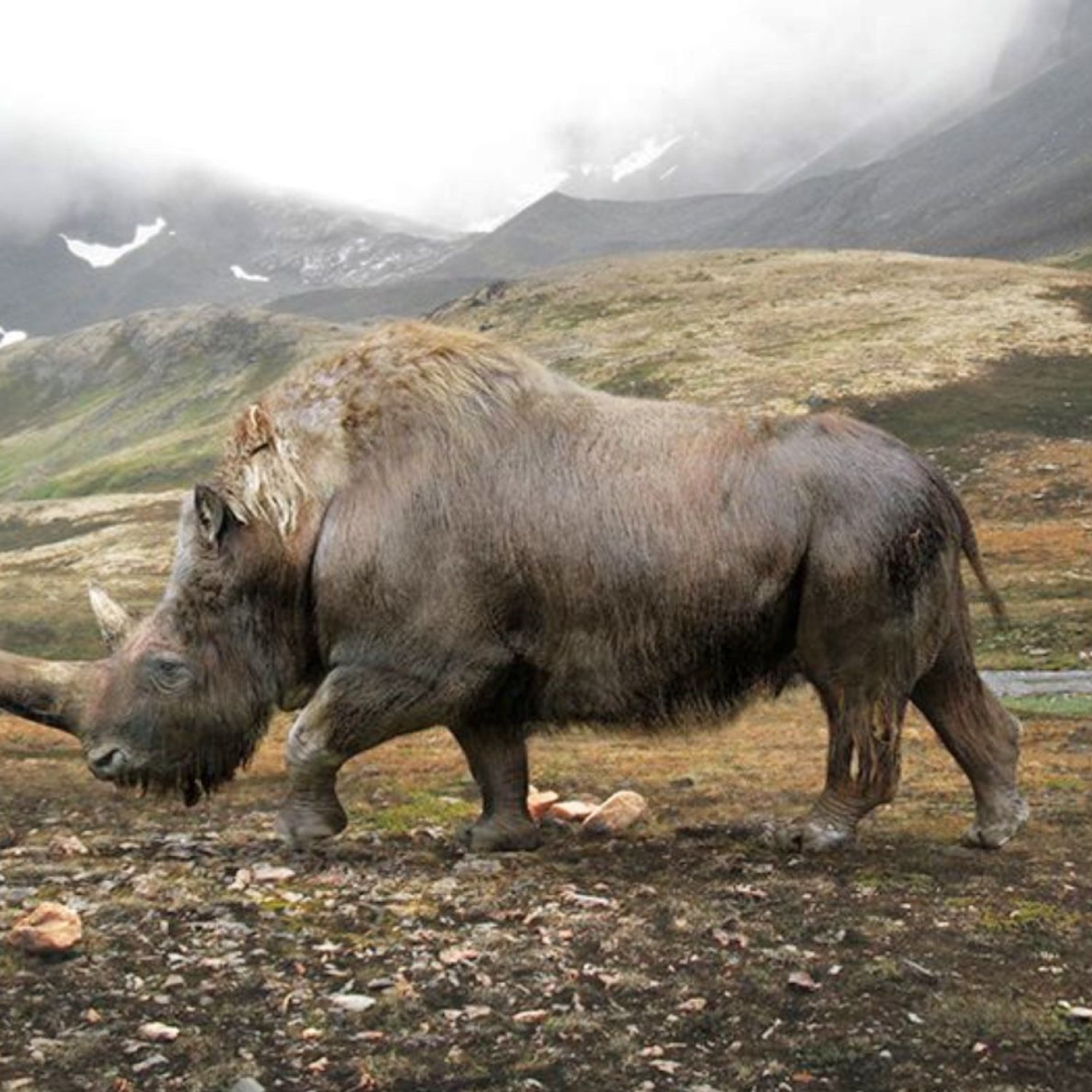
Woolly Rhinoceros
3-4 meters
The Woolly Rhinoceros, also known as the Coelodonta, was a large and bulky animal, measuring around 3-4 meters in length. Belonging to the Rhinocerotidae family, this fascinating creature lived during the Ice Age period and is now extinct. Despite its intimidating appearance, the woolly rhinoceros was a herbivore and mainly fed on grasses and plants. It is believed that the decline in its habitat and food sources led to its disappearance from the Earth.
Animal Details Summary:
Common Name: Woolly Rhinoceros
Kingdom: Animalia
Habitat: Tundra and grasslands
The Magnificent Story of the Woolly Rhinoceros – A Giant of the Ice Age
As soon as you hear the word "rhinoceros", what comes to mind is most likely an image of a large, horned animal roaming the savannas of Africa. However, there is another species of rhinoceros that existed thousands of years ago and had a very different habitat - the Woolly Rhinoceros.The Woolly Rhinoceros, also known as Coelodonta antiquitatis, was a large, majestic creature that roamed the northern part of Eurasia during the last Ice Age. It is believed to be closely related to the modern-day rhinoceroses, but its appearance and lifestyle were very distinct Woolly Rhinoceros.
In this article, we will take a journey back in time and uncover the fascinating story of the Woolly Rhinoceros – a creature that lived during one of the most extreme periods in the history of our planet.
A Giant of the Ice Age
The Woolly Rhinoceros, as its name suggests, was well-adapted to the cold and harsh environment of the Ice Age. It had a thick, shaggy coat that helped it survive in the sub-zero temperatures of the tundra and grasslands it inhabited.But what made this species stand out was its unique body shape. Unlike other rhinoceroses, the Woolly Rhinoceros was not a massive, lumbering creature. Instead, it had a compact, stocky body, with a large hump on its back and a short, muscular neck.
These features, along with its short, powerful legs, helped the Woolly Rhinoceros navigate through the thick snow and rough terrain of its habitat with ease. It also had a large, bony plate on its nose, which likely served as a protective shield against the harsh winds and snowstorms of the Ice Age.
A Herbivore of the Cold Lands
The Woolly Rhinoceros was a herbivorous animal, meaning it fed on plants and vegetation White Tailed Eagle. In the summer months, it primarily grazed on grasses, sedges, and other low-lying plants found on the tundra and grasslands.But as the cold winter months approached, the availability of food decreased, and the Woolly Rhinoceros had to adapt. Thanks to its herbivorous diet, it could consume coarse and woody vegetation, such as shrubs and tree bark, during the winter.
However, this diet change likely contributed to the animal's downfall, as the highly abrasive and fibrous food could have worn down its teeth and made it vulnerable to starvation.
A Creature of the Tundra and Grasslands
The Woolly Rhinoceros inhabited the northern parts of Eurasia, specifically the tundra and grasslands of present-day Russia. These regions were much more expansive during the Ice Age, covering a vast area that stretched from the Arctic Circle to southern France.While the woolly mammoth and other iconic creatures of the Ice Age also roamed this area, the Woolly Rhinoceros had a very different habitat preference. It preferred open, treeless landscapes, unlike the woolly mammoth, which preferred wooded areas. This difference in habitat may have been a result of competition for resources between the two species.
An Extinct Species
The Woolly Rhinoceros had a long reign on the Earth, with some evidence suggesting that it may have existed for over 2 million years. However, its time came to an end around 10,000 years ago when the climate warmed, and the ice sheets started to retreat.As the tundra and grasslands gave way to forests and the temperature rose, the Woolly Rhinoceros's habitat and food sources significantly decreased. Unable to adapt to these changes, the species eventually became extinct.
While scientists initially believed that overhunting by early humans may have contributed to their extinction, recent research suggests that their decline was mainly due to climate change.
The Last Journey of the Woolly Rhinoceros
Although the Woolly Rhinoceros is extinct, its remains have provided scientists with valuable information about this magnificent creature. Fossils of the Woolly Rhinoceros have been discovered in various parts of the world, with the most well-preserved and complete specimens found in the permafrost of Siberia.One of the most remarkable discoveries was made in 2014 when a nearly complete fossil of a Woolly Rhinoceros was found in Russia's Sakha Republic. The fossil, which included soft tissues such as fur and skin, allowed researchers to study the animal's anatomy and gather information about its adaptations to the extreme environment of the Ice Age.
Other discoveries, such as cave paintings and engravings, have also provided insight into how early humans interacted with the Woolly Rhinoceros. These artworks suggest that the animal held great cultural significance for these ancient civilizations, with depictions of the creature found in various caves across Europe.
A Glimpse into the Future – Should We Bring Back the Woolly Rhinoceros?
With advancements in technology and science, the idea of de-extinction has become a topic of debate in recent years. De-extinction refers to the process of bringing back species that have become extinct by using genetic engineering and cloning techniques.One of the species that have been a subject of this discussion is the Woolly Rhinoceros. Scientists believe that it may be possible to bring back the species by using preserved DNA from well-preserved fossils or from individuals that have been mummified in the permafrost.
However, this idea has sparked controversy, with arguments for and against the de-extinction of species. Some argue that it could help restore balance to damaged ecosystems and bring back lost biodiversity. Others argue that the resources used for de-extinction could be better utilized for conserving existing species and habitats.
Therefore, the concept of de-extinction, particularly in regards to the Woolly Rhinoceros, remains a topic of discussion and research.
In Conclusion
The Woolly Rhinoceros was a unique and fascinating creature that lived during one of the most extreme periods in our planet's history. Its adaptations to the harsh environment of the Ice Age, along with its distinctive appearance, make it an intriguing subject for scientists and enthusiasts alike.While the Woolly Rhinoceros is no longer roaming the Earth, its legacy lives on through fossils and artifacts, providing us with valuable information about our planet's past.
Perhaps one day, with the advancements in technology and our understanding of extinct species, we may see the Woolly Rhinoceros once again. But until then, its remarkable story remains a reminder of the incredible diversity that has existed on our planet and the importance of preserving it for future generations.

Woolly Rhinoceros
Animal Details Woolly Rhinoceros - Scientific Name: Coelodonta antiquitatis
- Category: Animals W
- Scientific Name: Coelodonta antiquitatis
- Common Name: Woolly Rhinoceros
- Kingdom: Animalia
- Phylum: Chordata
- Class: Mammalia
- Order: Perissodactyla
- Family: Rhinocerotidae
- Habitat: Tundra and grasslands
- Feeding Method: Herbivorous
- Geographical Distribution: Northern Eurasia
- Country of Origin: Russia
- Location: Extinct
- Animal Coloration: Dark brown to black
- Body Shape: Large and bulky
- Length: 3-4 meters
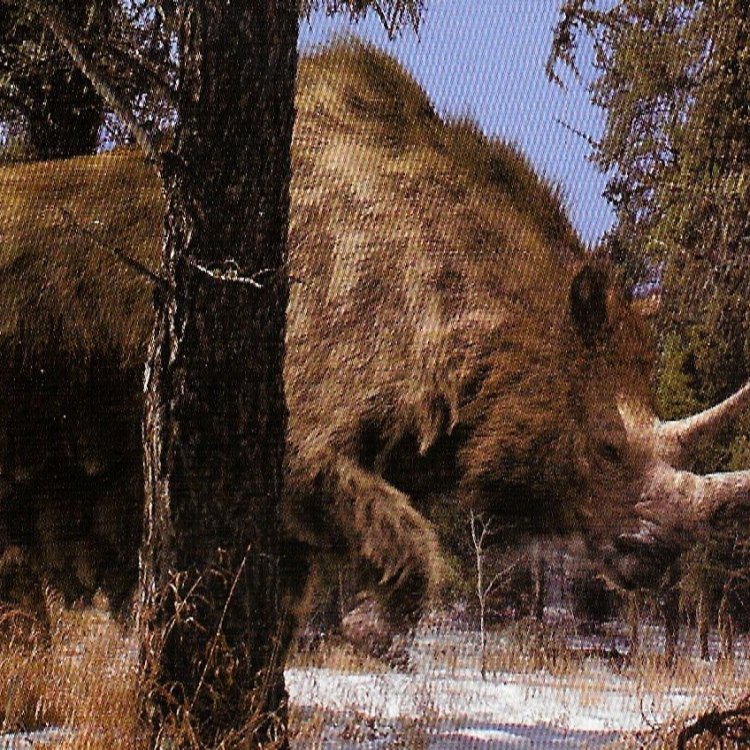
Woolly Rhinoceros
- Adult Size: Up to 2 meters tall
- Average Lifespan: 30-40 years
- Reproduction: Sexual
- Reproductive Behavior: Males fight for dominance
- Sound or Call: Unknown
- Migration Pattern: Unknown
- Social Groups: Solitary
- Behavior: Mostly peaceful and non-aggressive
- Threats: Hunting by early humans
- Conservation Status: Extinct
- Impact on Ecosystem: Unknown
- Human Use: Hunting for fur and meat
- Distinctive Features: Dual horns, thick fur
- Interesting Facts: One of the largest land mammals of the Ice Age
- Predator: No natural predators
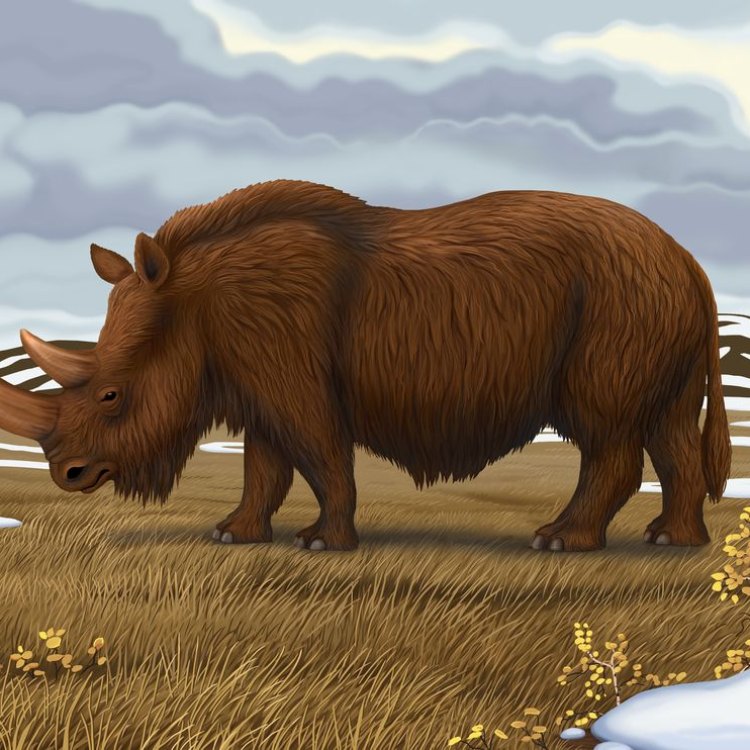
Coelodonta antiquitatis
The Fascinating Tale of the Extinct Woolly Rhinoceros
Deep in the frozen landscapes of the Ice Age, roamed an impressive and majestic creature – the Woolly Rhinoceros. With its thick fur, dual horns, and massive size, the Woolly Rhino was truly a sight to behold. While it may have gone extinct thousands of years ago, the legacy of this remarkable animal continues to intrigue and amaze people to this day.If you have never heard of the Woolly Rhinoceros, you are not alone PeaceOfAnimals.Com. Despite its impressive size and unique features, this ancient creature remains largely unknown to many. In this article, we will delve into the world of the Woolly Rhinoceros, exploring its physical characteristics, behavior, and impact on the ecosystem.
So, buckle up and get ready to travel back in time to unravel the fascinating tale of the extinct Woolly Rhinoceros.
The Size and Lifespan of the Woolly Rhinoceros
The Woolly Rhinoceros, also known as Coelodonta antiquitatis, was an enormous land mammal that lived during the Ice Age, around 300,000 to 10,000 years ago. They could reach up to 2 meters in height and weighed around two to three tons – making them one of the largest land mammals of their time.The average lifespan of the Woolly Rhino was estimated to be 30-40 years, which is relatively short compared to other large land mammals. However, living in a harsh and unforgiving environment like the Ice Age might have contributed to their shorter lifespan.
Reproduction: Sexual and Dominance Battles
Like most mammals, the Woolly Rhinoceros had a sexual mode of reproduction. However, due to their solitary nature, little is known about their mating behaviors Wolverine. What we do know is that during the breeding season, male Woolly Rhinos would engage in fierce battles, fighting for dominance and the right to mate with a female.The dominant male would use his two large horns to intimidate and defeat rivals, leaving them with severe injuries or even death. This aggressive behavior was not only used to attract females but also to establish dominance and control over a particular territory.
Sound or Call: The Mysterious Silence of the Woolly Rhino
One of the most intriguing aspects of the Woolly Rhinoceros is its mysterious silence. While most animals communicate through sounds or calls, there is no record of any vocalization made by the Woolly Rhino. Scientists have no conclusive evidence to support or reject the idea that the Woolly Rhinoceros was unable to create any sounds at all.
However, some researchers speculate that the thick fur and fatty layers around their throat may have muffled any sound they could have produced. Others believe that these creatures were quiet by nature and did not need to make any noise for survival.
Migration Pattern and Social Groups
Unfortunately, not much is known about the migration patterns and social groups of the Woolly Rhinoceros. They were mostly solitary animals, especially during the harsh winter months when food was scarce. However, it is believed that these ancient creatures may have gathered in herds during the breeding season and to find safety in numbers from potential predators.As for their migration patterns, it is likely that Woolly Rhinos followed the movements of their food sources, such as grass and shrubs. They may have roamed vast areas in search of food, but there is no conclusive evidence to confirm their exact migration route.
The Peaceful Nature of the Woolly Rhino and Its Threatening Predators
Despite their large size and fierce appearance, the Woolly Rhinoceros was a mostly peaceful creature. They were non-aggressive towards other animals and humans. Their diet consisted of vegetation, and they were herbivores, making them unlikely to attack or pose a threat to other creatures.However, despite their peaceful nature, Woolly Rhinos were not completely safe from predators. Their thick fur and massive size may have provided some defense against predators, but the prehistoric hyenas and lions were still a significant threat to them. Early humans were also known to hunt Woolly Rhinos for their fur and meat, contributing significantly to their extinction.
Impact on the Ecosystem and Human Use
The extinction of the Woolly Rhinoceros may have had far-reaching effects on the ecosystem of the Ice Age. These massive creatures were grazers, and their diet played a crucial role in maintaining the balance of the ecosystem. With their extinction, the vegetation they consumed may have overgrown, leading to changes in the food chain and affecting other species that depended on the vegetation for survival.On the other hand, humans also played a significant role in the extinction of the Woolly Rhinoceros. They hunted these creatures for their thick fur and meat, using their bones and horns for various purposes. Today, the horns of the Woolly Rhino are prized possessions in some cultures and used in traditional medicines, further impacting their preservation.
The Distinctive Features and Interesting Facts about the Woolly Rhinoceros
The Woolly Rhinoceros was known for its distinctive features, which set it apart from other species of rhinos. Apart from its massive size and dual horns, the most notable feature of the Woolly Rhino was its thick fur covering its entire body. This thick coat protected them from the harsh weather conditions of the Ice Age, making it possible for them to survive in such an extreme environment.The thick fur of the Woolly Rhino also provided a great source of insulation, keeping them warm during the long and bitterly cold winter months. This feature was one of the main reasons why these ancient creatures thrived in the frigid temperatures of the Ice Age.
Now, let's dive into some interesting facts about the Woolly Rhinoceros:
- The Woolly Rhinoceros was one of the first animals to adapt to the extreme weather conditions of the Ice Age, evidence suggests that they may have originated from northern China.
- These massive creatures had a hunched appearance, with their heads held lower than their shoulders.
- The Woolly Rhinoceros was a distant cousin of the modern-day rhinos, and its closest living relative is the Sumatran rhino.
- Their two horns were made of keratin, the same material that makes up human hair and nails.
- Woolly Rhinoceros remains have been found in Europe, Asia, and North America, further proving their adaptability to different environments.
The Legacy of the Woolly Rhino
Unfortunately, the Woolly Rhinoceros went extinct around 10,000 years ago, along with many other Ice Age animals. Climate change, coupled with human activities, is believed to be the main reason for their extinction. But even though these magnificent creatures are no longer roaming the Earth, their legacy continues to fascinate and intrigue us.Scientists continue to study the remains of the Woolly Rhinoceros, piecing together the mysteries of their lives. Their thick fur and unique features have also inspired fashion trends and have been featured in movies and books. The Woolly Rhinoceros may no longer be with us, but their impact on the world will never be forgotten.
In Conclusion
The Woolly Rhinoceros may have gone extinct thousands of years ago, but their story is far from over. From their impressive size and unique features to their peaceful nature and eventual extinction, the Woolly Rhino has left a lasting legacy that continues to captivate people's minds.As we continue to learn more about this ancient creature and the world they lived in, we are reminded of the importance of preserving our planet and the diverse species that call it home. The Woolly Rhinoceros may be gone, but their memory lives on, inspiring us to protect and appreciate the fascinating and wondrous world we live in.
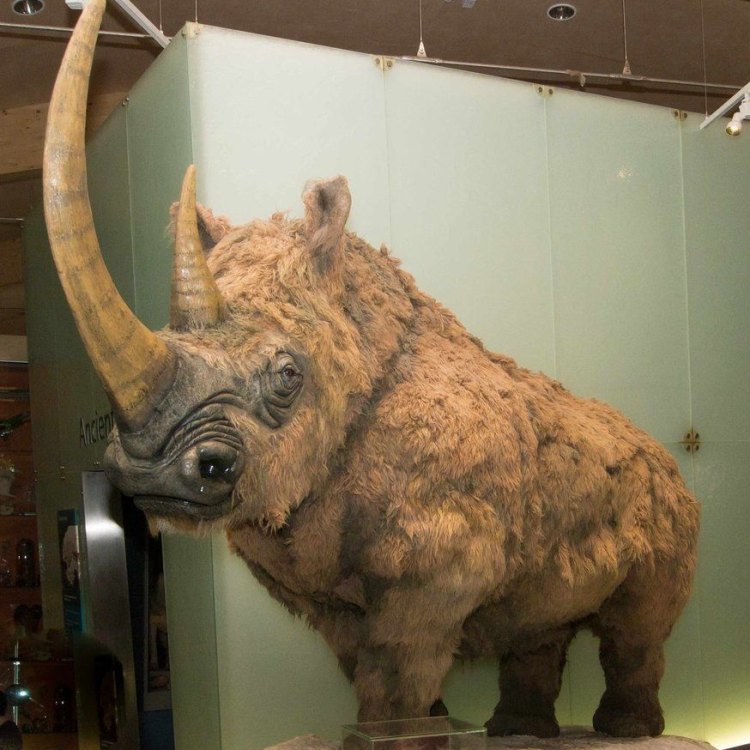
The Magnificent Story of the Woolly Rhinoceros – A Giant of the Ice Age
Disclaimer: The content provided is for informational purposes only. We cannot guarantee the accuracy of the information on this page 100%. All information provided here may change without prior notice.

